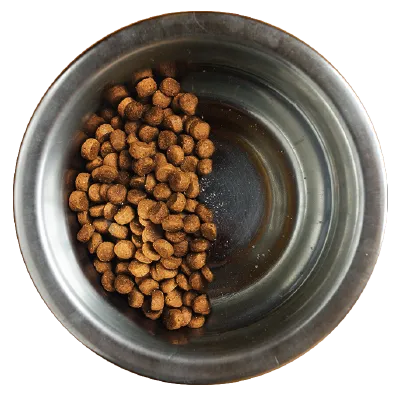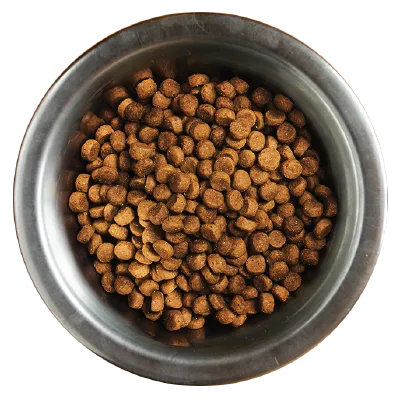Choosing the right food for your canine companion is a critical decision for their overall health and well-being. Among the myriad of options available, Lamb And Sweet Potato Dog Food has emerged as a popular choice, particularly for dogs with sensitive stomachs or food allergies. This combination offers a blend of novel protein and digestible carbohydrates, making it an excellent foundation for a balanced diet. If you’re looking to provide your dog with optimal nutrition, understanding the specific benefits of a high-quality lamb and sweet potato formula is key to ensuring a vibrant, healthy life for your furry friend.
Lamb and sweet potato dog food is not just a trend; it’s a carefully crafted dietary solution that addresses common canine nutritional needs while prioritizing digestibility and nutrient absorption. For many pet owners, especially those navigating dietary sensitivities, finding a food that supports both digestive health and a lustrous coat can be a game-changer. This article delves into why lamb and sweet potato is such a beneficial pairing, exploring its ingredients, nutritional profile, and how to effectively transition your dog to this wholesome meal. When considering a food that goes beyond the basic kibble, understanding what makes lamb and sweet potato stand out can lead to a happier, healthier dog. For a comprehensive look at dietary needs, you might also be interested in what do huskies eat besides dog food.
Why Lamb and Sweet Potato? The Nutritional Powerhouses
The core ingredients in this specialized dog food, lamb and sweet potato, bring a host of benefits that make them ideal for many dogs. Lamb is often considered a novel protein, meaning many dogs haven’t been exposed to it before, which can reduce the likelihood of allergic reactions. It’s a rich source of essential amino acids, crucial for muscle development, tissue repair, and overall body function. Furthermore, lamb provides vital vitamins and minerals like iron, zinc, and B vitamins, supporting energy metabolism and immune health.
Sweet potatoes, on the other hand, are an excellent source of highly digestible carbohydrates, providing sustained energy without the common allergens found in grains like corn, wheat, or soy. Beyond energy, sweet potatoes are packed with dietary fiber, which aids in healthy digestion and promotes regular bowel movements. They are also rich in beta-carotene, an antioxidant that converts to Vitamin A in the body, supporting vision, immune function, and skin health. This dual benefit of digestible protein and complex carbohydrates creates a synergistic effect, making lamb and sweet potato dog food a top choice for sensitive pups. This grain-free approach is often preferred for dogs with specific sensitivities, offering a gentle yet nutrient-dense meal.
Unpacking the Ingredients: A Deeper Look
Beyond the primary lamb and sweet potato, a premium dog food formula will include a thoughtful selection of complementary ingredients to ensure a complete and balanced diet. For example, ingredients such as peas, garbanzo beans, and pea flour further contribute to the protein content and add dietary fiber. Canola oil, preserved with mixed tocopherols, serves as a healthy fat source, providing omega fatty acids crucial for skin and coat health.
Perhaps one of the most unique additions in some lamb and sweet potato formulas is avocado. Despite common misconceptions, avocado oil and avocado meal are beneficial for dogs, offering healthy fats, including Omega-3 and Omega-6 fatty acids, and antioxidants that support skin and coat health, helping to alleviate dryness and promote a shiny, healthy appearance. Other beneficial ingredients often include flax seed for additional Omega-3s, dried chicory root for prebiotics to support gut health, and a comprehensive blend of vitamins and minerals to cover all nutritional bases. The inclusion of Yucca Schidigera extract can help reduce stool odor, and various fermented products like Lactobacillus Acidophilus contribute to a healthy microbiome, further supporting digestive efficiency.
Understanding the Nutritional Profile: Guaranteed Analysis and Beyond
A thorough understanding of the guaranteed analysis and nutrient breakdown is essential when evaluating any dog food, especially specialized formulas like lamb and sweet potato dog food. This information provides a snapshot of the food’s composition and its ability to meet your dog’s dietary needs.
| Guaranteed Analysis | |
|---|---|
| Crude Protein | (min) |
| Crude Fat | (min) |
| Crude Fiber | (max) |
| Moisture | (max) |
| Vitamin E | (min) |
| Omega-6 Fatty Acid* | (min) |
| Omega-3 Fatty Acid* | (min) |
| Ascorbic Acid* | (min) |
| *Not recognized as an essential nutrient by the AAFCO Dog Food Nutrient Profiles. |
This robust profile indicates a high-protein, moderate-fat diet suitable for active adult dogs, with good levels of fiber for digestion. The inclusion of Omega-6 and Omega-3 fatty acids is vital for maintaining healthy skin and a glossy coat, while Vitamin E and Ascorbic Acid (Vitamin C) provide antioxidant support. The metabolizable energy (ME) content, typically around 3,480 kcal/kg, provides ample energy for daily activities without being excessively calorie-dense.
Essential Vitamins, Minerals, and Amino Acids
Beyond the basic guaranteed analysis, a detailed nutrient analysis reveals the specific micronutrients that contribute to your dog’s overall health. A high-quality lamb and sweet potato dog food should contain a full spectrum of vitamins and minerals.
Key Vitamins: Vitamin A for vision and immune health, Vitamin D for bone health, Vitamin E as an antioxidant, and a complex of B vitamins (Thiamine, Riboflavin, Pantothenic acid, Niacin, Pyridoxine, Folic acid, Vitamin B12, Choline) vital for metabolic functions and nerve health.
Crucial Minerals: Calcium and Phosphorus are critical for strong bones and teeth, Potassium and Sodium for fluid balance, Magnesium for muscle and nerve function, and trace minerals like Iron, Copper, Manganese, Zinc, Iodine, and Selenium for various enzymatic and immune processes.
Amino Acids: These are the building blocks of protein. The detailed breakdown of amino acids like Arginine, Lysine, Leucine, and Methionine ensures that all essential amino acids are present in adequate amounts for muscle maintenance, enzyme production, and overall cellular repair. Taurine, while not an essential amino acid for dogs as they can synthesize it, is often supplemented due to its importance for heart health. This comprehensive nutritional breakdown confirms that such a formula is designed to meet the nutritional levels established by the AAFCO Dog Food Nutrient Profiles for Maintenance, ensuring it is a complete and balanced meal for adult dogs. For specific breed nutritional considerations, you might find information on best food for golden retriever helpful.
Daily Feeding Guidelines: Tailoring to Your Dog’s Needs
Proper feeding is crucial for maintaining your dog’s optimal body weight and health. The guidelines provided with lamb and sweet potato dog food are typically based on an adult dog’s weight, but these are general recommendations. Individual needs can vary based on age, activity level, metabolism, and environmental factors.
Adult Feeding Guidelines:
- 3 – 10 lbs: 1/4 to 3/4 Cup/Day
- 10 – 20 lbs: 3/4 to 1 1/4 Cups/Day
- 20 – 50 lbs: 1 1/4 to 2 1/2 Cups/Day
- 50 – 80 lbs: 2 1/2 – 3 1/2 Cups/Day
- Dogs 80 lbs+: 3 ½ cups per day plus an additional ¼ cup for every 10 lbs over 80 lbs.
These guidelines serve as a starting point. It’s important to monitor your dog’s body condition and adjust the feeding amount as needed to prevent under or overfeeding. A dog maintaining an ideal weight will have a visible waist when viewed from above and an abdominal tuck when viewed from the side, with ribs easily felt but not seen. Always provide access to fresh, clean water at all times. If you have a small dog, you might also want to read about best wet dog food for small dogs for other dietary considerations.
Smooth Transitioning: Introducing New Food Successfully
Switching your dog’s food, even to a highly beneficial one like lamb and sweet potato dog food, should be done gradually to avoid digestive upset. A sudden change can lead to diarrhea, vomiting, or a decreased appetite. A typical transition period lasts about 7 days, slowly increasing the new food while decreasing the old food.
 Feeding 80% old brand and 20% AvoDerm Natural dog food
Feeding 80% old brand and 20% AvoDerm Natural dog food
Day 1 & 2: Start by feeding 80% of their old food mixed with 20% of the new lamb and sweet potato formula. This allows your dog’s digestive system to begin adapting to the new ingredients.
 Feeding 50% old brand and 50% AvoDerm Natural dog food
Feeding 50% old brand and 50% AvoDerm Natural dog food
Day 3 & 4: Increase the proportion to 50% old food and 50% new food. At this stage, you should be observing your dog for any signs of digestive discomfort and ensuring they are eating well.
 Feeding 20% old brand and 80% AvoDerm Natural dog food
Feeding 20% old brand and 80% AvoDerm Natural dog food
Day 5: Shift to 20% old food and 80% new food. By now, your dog’s system should be largely accustomed to the new diet, and you should see consistent, healthy digestion.
 Feeding 100% AvoDerm Natural dog food
Feeding 100% AvoDerm Natural dog food
Day 6: Your dog can now enjoy 100% of the lamb and sweet potato dog food. Throughout this process, if you notice any persistent digestive issues, slow down the transition or consult your veterinarian. Each dog is unique, and some may require an even slower transition period. Always consult your veterinarian if you have concerns about your dog’s diet or health. For information on specific dietary restrictions, particularly for breeds with sensitive systems, you may wish to refer to shih tzu food to avoid to ensure you are making the best choices.
Beyond the Bowl: Holistic Health Considerations
Choosing a lamb and sweet potato dog food is a significant step towards providing optimal nutrition, but it’s part of a larger picture of holistic pet care. While this formula addresses many dietary needs, especially for those with sensitivities, maintaining overall health involves regular veterinary check-ups, consistent exercise, and a loving environment. The natural ingredients and balanced nutrient profile in high-quality lamb and sweet potato recipes work synergistically to support not just digestive health but also vitality, immune strength, and a vibrant coat.
It’s important to remember that while a grain-free diet can be beneficial for many dogs, it’s not a universal solution. Always consult with your veterinarian to determine the best dietary approach for your specific dog, especially if they have underlying health conditions. They can offer tailored advice based on your dog’s breed, age, activity level, and medical history. Staying informed about your dog’s nutritional needs and making educated choices about their food contributes significantly to their long-term health and happiness. For information on specialized dietary needs like urinary health, consider checking out best non prescription dry dog food for urinary health.
Conclusion
Opting for lamb and sweet potato dog food offers a nutritious and highly digestible choice for many canine companions, especially those with sensitivities. This carefully formulated diet harnesses the power of novel proteins and complex carbohydrates, coupled with essential vitamins, minerals, and fatty acids, to support overall health from the inside out. By understanding the ingredients, nutritional breakdown, and proper feeding guidelines, you can provide your dog with a meal that not only tastes great but also contributes significantly to their well-being. Always ensure a gradual transition when introducing new food and consult with your veterinarian for personalized dietary advice. Investing in high-quality lamb and sweet potato dog food is an investment in your dog’s happy and healthy future. Explore our other articles for more tips on dog care and nutrition!
